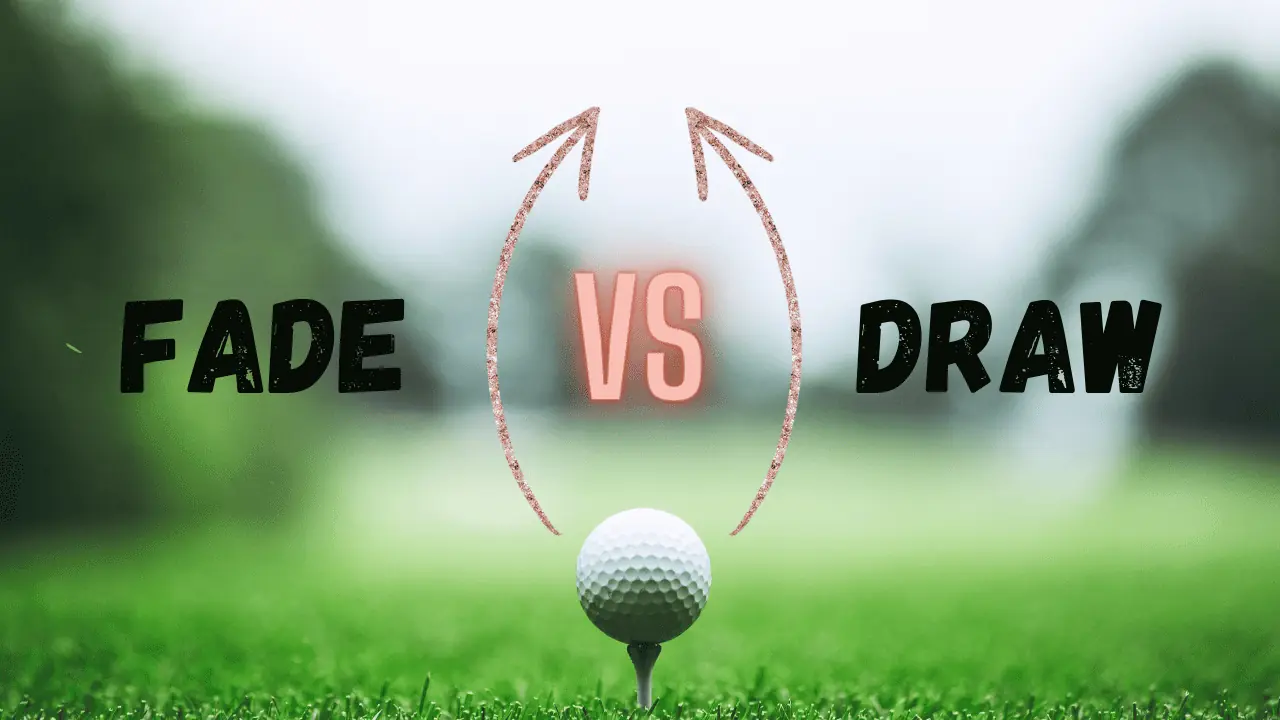Table of Contents
A fade and draw are both handy golf shots to help you cut doglegs, avoid hazards and enhance your control around the golf course. This article teaches you when and how to play a draw vs fade in golf, along with the advantages and disadvantages of shaping golf shots.
After walking away from this post, you will possess the knowledge to help you execute draw and fade shots from anywhere on the golf course. Furthermore, our detailed guide advises when to induce each shape for astute on-course shot selection.

What is a Fade in Golf?
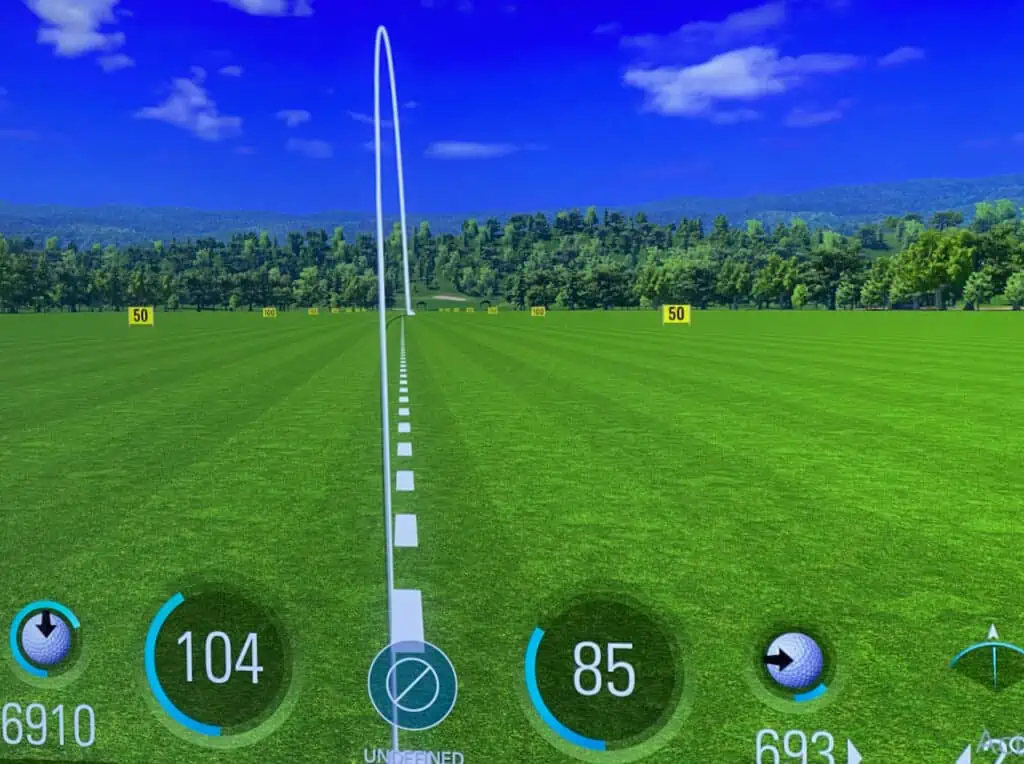
A fade in golf sees your ball curving from left to right for right handers and from right to left for lefties. It is also commonly referred to as a cut shot.
A controlled fade occurs when your clubface is open to your swing path at impact, causing the face to cut across the ball at contact. The position of your clubface relative to your swing path imparts spin on the ball, propelling it to curve left to right or from right to left, depending on your hand orientation.
What is a Draw in Golf?
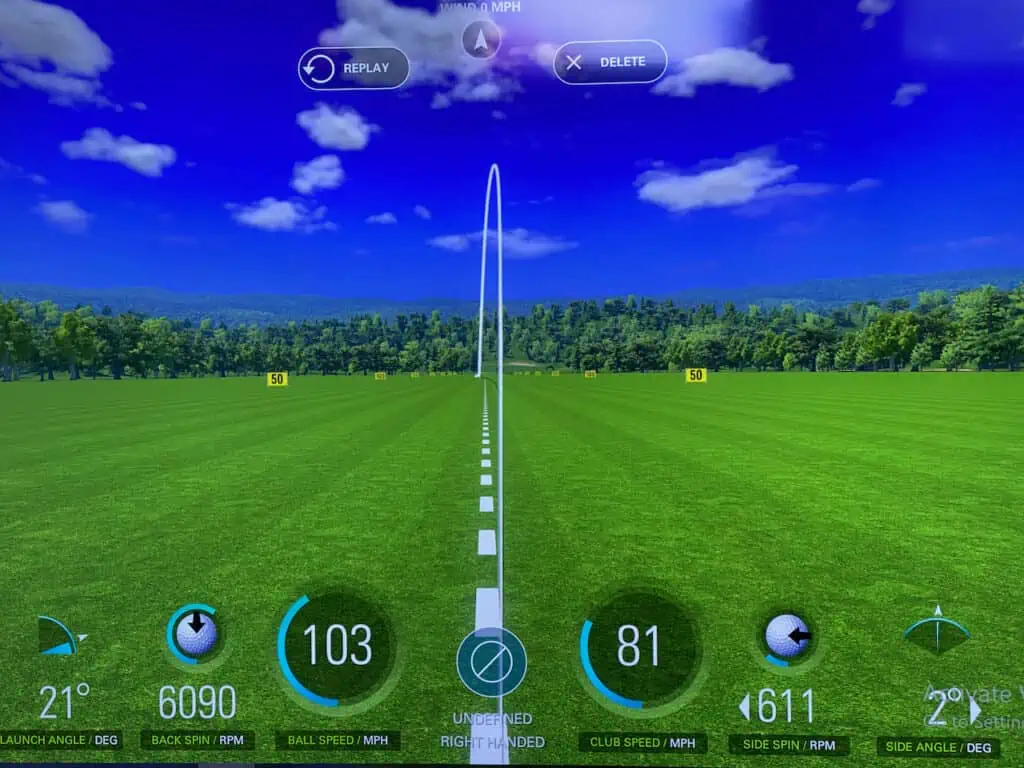
Contrary to a fade, a draw propels your golf ball from right to left for right handers and left to right for the Mike Weir’s of the world. You can produce a draw shot by closing your clubface relative to your swing path at contact, encouraging a desirable curve back toward your target.
Amateur golfers often regard a draw as the holy grail of shot shapes. However, I played my best golf as a single handicapper hitting fades.
🏌️♂️ Related: The 10 Best Draw Drivers for a Slice

Key Differences Between Fade vs Draw
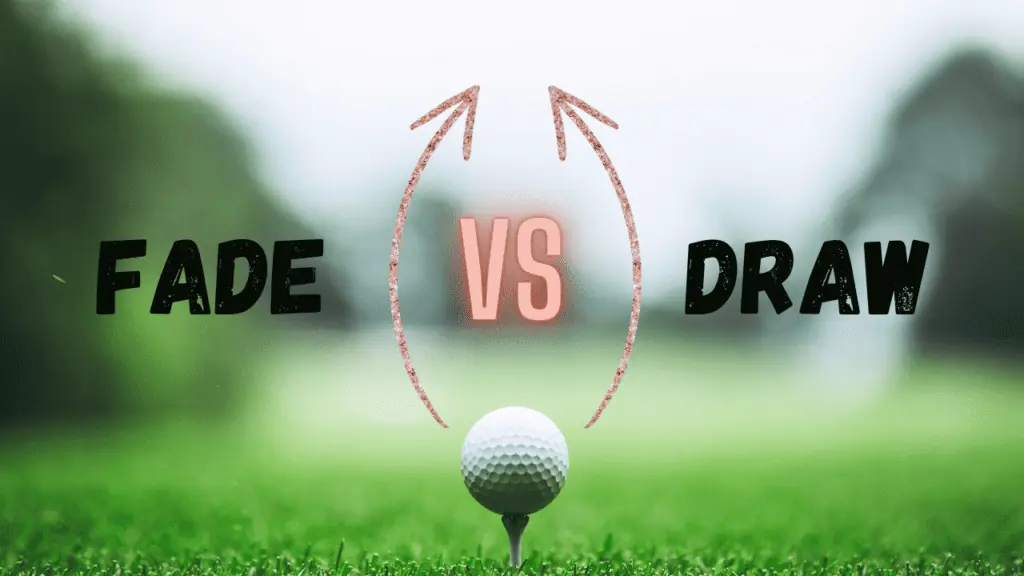
Ball Position
I place my ball in the center or marginally forward in the stance for a fade. Conversely, for a draw, I set the ball marginally back in my setup because I find it helps me produce an outwards swing and strike the ball with a closed clubface relative to my target.
Swing Path
My clubface angle relative to my swing path determines the shape of my shot. When I execute a fade shot, I attempt to swing from the outside in, leaving my clubface open to my swing path at contact. Since I am a right handed golfer, this angle sends my ball to the left before curving right towards the target.
Conversely, I find that an inside-out swing helps me keep my face closed to the club path to induce a draw. By inside out, I refer to taking the club inside at the top by maximizing my shoulder rotation. I then swing down to the ball and outwards so that my clubface is closed to the path.
Clubface Angle
The clubface angle respective to the swing path differs for a draw vs fade in golf. A fade requires an open clubface to the swing path, while a draw shape demands a closed clubface to my swing path.
Shot Shape
A draw vs fade shots differ in the shape of the curve. If you are right handed like me, the ball shapes from left to right for a fade. Conversely, I curve my ball from the right to the left on draw shots. Left handers send the ball right to left for a fade and left to right when executing a draw.
Wrist Angle
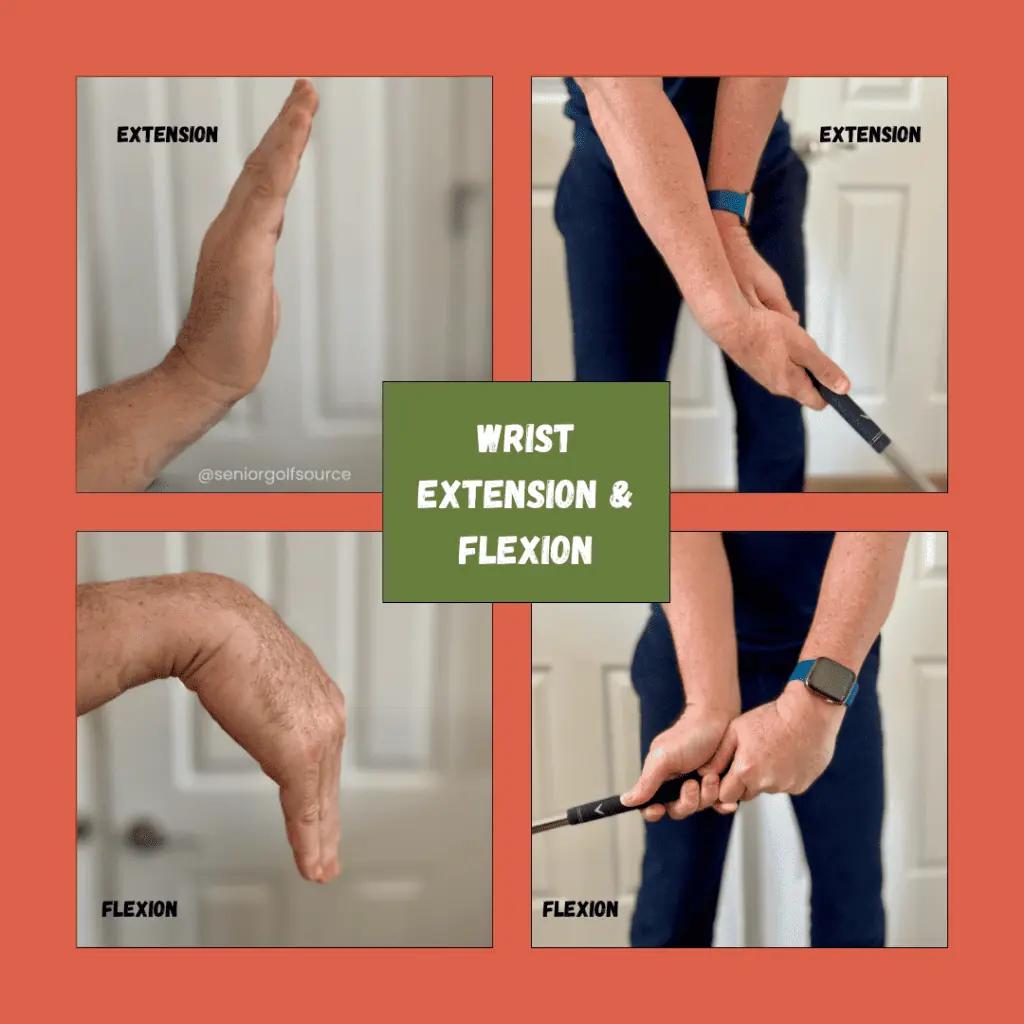
By using the HackMotion wrist sensor, I have come to learn that our wrist angles determine 80% of the ball flight direction. Optimize your wrist angles at critical parts of the golf swing to help you position the clubface accordingly to generate the desired shape.
I flex my wrists prior to impact when hitting a draw. It helps me shallow the shaft and close the clubface relative to my swing path. This sends my ball out to the right before it curves left back towards my original target.
⛳️ Related: Best Golf Training Aids on the Market in 2023

How to Hit a Draw in Golf
Closed Stance
Golf Instructor Todd Kolb explains that you must close your stance relative to your target in anticipation for a draw. This means you aim right of the target if you are right handed and left for lefties. This accounts for the curve of your ball to help you land it close to your intended target.
Ball Back in the Stance
I suggest placing the ball marginally back in your stance for a draw. I find it easier to strike the ball with the club traveling outward but the face closed to the swing path.
Inside Out Swing Path
Take your clubhead inside at the top of your swing and release it along an outwards path en route to the golf ball. This helps you strike the ball with a closed clubface comparable to the swing path setting me up for a draw.
Flex Wrists Prior To Impact
I adapt my wrist angles before impact for a draw, flexing them to help me shallow the clubface and keep it closed relative to my path. I also find that wrist flexion elevates my compression to preserve ball speed and contain spin resulting in better distance.
Clubface Closed
Your clubface should remain square to your target line but closed to your swing path for draw shots, making it easier to strike the ball. When you produce an inside to outside swing and square your clubface at contact, the face is naturally closed to the path, perfect for generating a draw shot.

How to Hit a Fade in Golf
In this section we will cover how to hit a fade in golf. To start, I’ll share a short YouTube instructional video by PGA Tour Champions, Padraig Harrington.
Open Stance
Contrary to a draw, a fade requires an open stance to account for the right-to-left curve for right handers and the left-to-right for lefties. Right handed golfers should aim to the left of your target, while lefties should line up to the right of the target to account for the curve.
Outside to In Swing Path
When I execute a fade, I induce an outside to in swing, meaning I swing from the outside at the top, down, and in. As Rory McIlroy explains, an outside-in swing direction propels the clubface to strike the ball while open to the path. This sends it left before curving right towards my original target.
Extend Wrists Prior To Impact
Opposite to a draw, I work on extending my wrist prior to impact. By extending my wrists, I open the clubface relative to the swing path, setting me up for a powerful fade.
If you hold your hands out in front of you and flick your wrist upwards, it enters an extended position. Hold the pose before turning your palm to face the target, and notice how your hand is open to the target. Wrist extension has the same impact on your clubface, opening it and setting you up for a fade.
Clubface Open to the Path
Keeping your clubface square to the target during an outside-to-in swing causes the clubface to sit open to the swing path. This angles the clubface to generate the necessary spin to propel the ball from the left side of the fairway back toward my target.

Fade vs Draw Lefty Golfers

Playing a draw or a fade as a lefty requires the opposite setup of a right hander for each shot. I will walk you through the steps below for a draw and a fade for a simpler explanation of each shape.
How Do You Hit a Draw as a Left Handed Golfer?
1. Aim left of the target
Left handed golfers should set up for a draw by aiming to the left of their intended target. A draw shot will start left and curve right towards the flag stick.
2. Ball towards your left foot
I recommend placing the ball toward your left foot, which is the back of your stance. As I previously mentioned, I find it easier to strike the ball with a closed face while the club is traveling outwards, prompting a left-to-right curve.
3. Inside to out swing path
There is no difference in the desired swing path for left and right handed golfers. You should produce an inside-to-out swing path, encouraging a closed clubface to the path at contact.
4. Flex wrists at impact
Flexing your wrists prior to impact prompts you to close the clubface. I find it delofts the face but boosts compression to increase ball speed, lower spin, and generate a controlled launch. The closed clubface to the path at contact leads to draw flight.
5. Clubface closed to the path
Your final mission to hit a draw as a leftie is to keep the clubface closed to the path at contact. Failure to keep the clubface in this angle could lead to a straight shot or a fade, sending your ball further away from the target than intended.
⛳️ Related: 10 Best Left Handed Clubs & Sets[Expert Guide]
How Do You Hit a Fade as a Left Handed Golfer?
1. Aim right of the target
Contrary to hitting a draw, left handed golfers should aim marginally right of their target to account for the left curve.
2. Outside to in swing path
The required swing path for a fade is the same for left and right handers. I suggest inducing an outside-in swing direction, making it easier to get your clubface open to the path at contact. This clubface angle helps you start your ball to the right side of the desired target before it curves left.
3. Extend wrists prior to impact
I find extending my wrists before impact causes me to open the clubface to the path, setting me up to induce a fade. Wrist extension applies to both left and right handers looking to produce the famed cut shot.
4. Clubface open to the path
Your final mission as a lefty looking to induce a fade is to keep your clubface open to your swing path at contact. An open face will send your ball to the right of the target before changing course and curving to the left.

Importance of Shaping Golf Shots
The ability to shape your shots helps you escape trouble, shorten holes and take hazards out of play. I often play a draw or a fade when my ball is in the woods, and I have trouble directly in front of me. Without a draw or fade shot in my repertoire, I would have to chip out and risk a bogey or double bogey on the hole.
Besides escaping trouble, draws and fades allow me to eliminate hazards from my line. If water is directly in front of me, I prefer to hit a draw or fade and go around. That way, my golf ball may remain dry if I do not catch all of it.
Finally, shaping shots gives you an advantage over your peers on dog leg holes. For example, my most effective shot is a power fade, which allows me to cut the corner on holes that dogleg left to right. Conversely, a player with a strong draw can cut the corner and shorten the hole on right to left dogleg holes.
Frequently Asked Questions
Is it better to hit a fade or draw?
In my experience, it is better to have the ability to hit a draw and a fade. This equips you with the skills to navigate any dogleg, avoid hazards and enhance your control on approach.
Does a draw or fade go farther?
I tend to hit my draw shots farther than fade shots because I tend to deloft the clubface on draws and launch it marginally lower. This gives me an additional roll once the ball lands to increase my total distance. I tend to hit fades higher and land them softly, losing out on roll post-landing.
Final Thoughts on Draw vs Fade in Golf
The draw vs fade debate on which shot is better should be a non-starter. Both shot shapes are vital for boosting control, avoiding hazards, and navigating dogleg holes. The ability to play both shots gives you the edge on any layout, as you can attack the flag and escape trouble by employing a draw vs fade.

